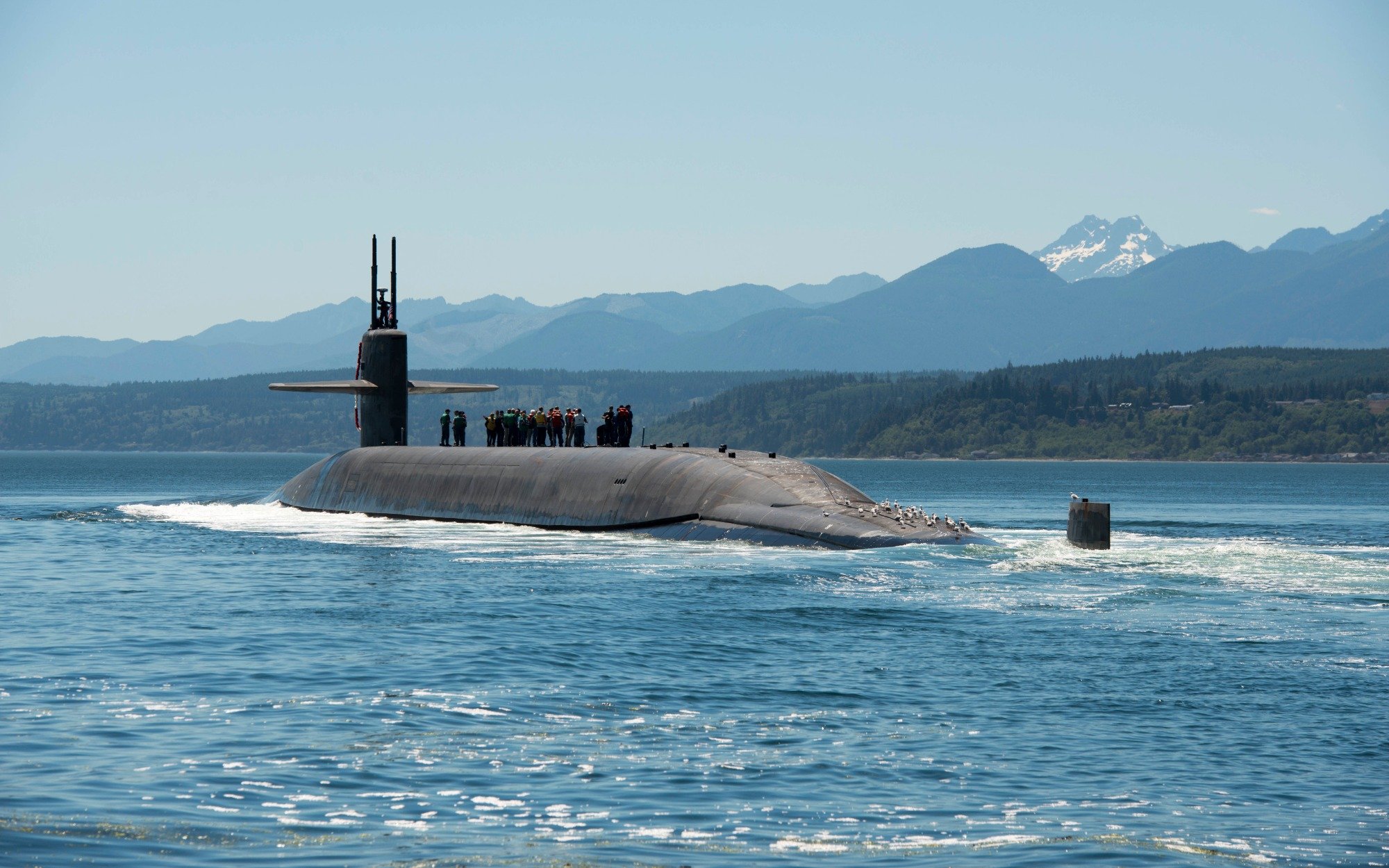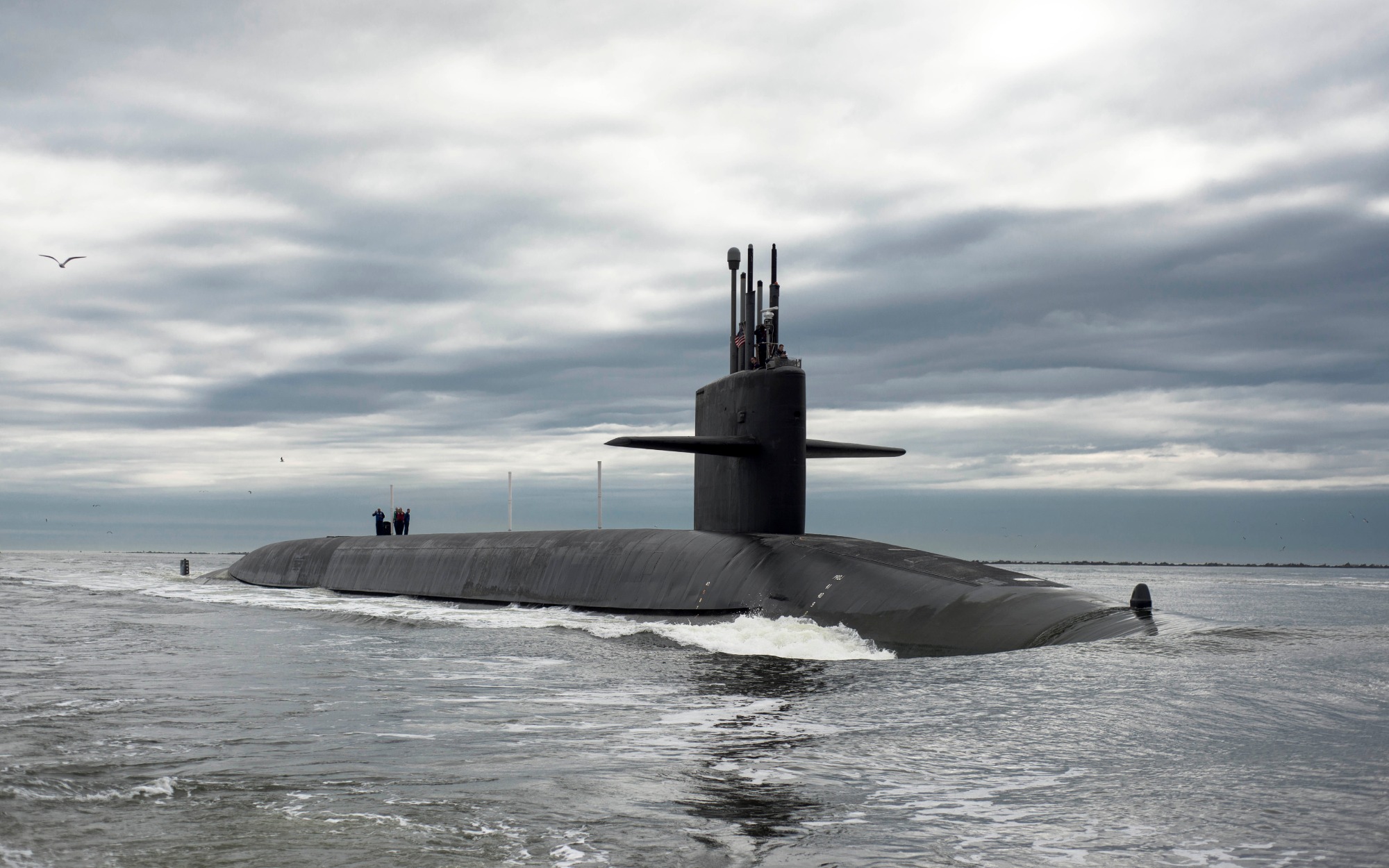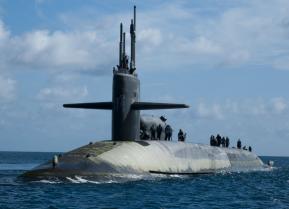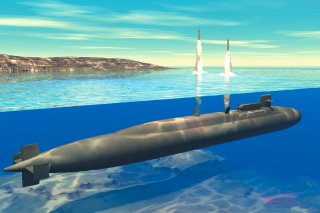Ohio-Class: The U.S. Navy's Most Powerful Submarines Ever
Ohio-class submarines represent one leg of America’s nuclear triad of atomic weapons. Serving as the backbone of U.S. national security, this triad consists of land, sea, and air-based capabilities. According to this strategy, these assets provide around-the-clock deterrence to prevent catastrophic actions from adversaries across the globe.
America’s arsenal of nuclear-powered submarines recently made headlines when an Ohio-class SSGN arrived in the U.S. Central Command area of responsibility.
In light of Hamas’ October 7 massacre against Israel, the White House has deployed two aircraft carriers and scores of military equipment to aid the Jewish state’s defensive efforts against the terror group.
The arrival of this nuclear-powered submarine is the latest indication that the Pentagon is bolstering its naval strike capabilities in the Middle East and deterring regional proxy groups from entering the war simultaneously.
While U.S. recognition of an Ohio-class vessel’s location is extremely rare, the military revealed that it had dispatched one of these submarines to the Middle East this spring to “help ensure regional maritime security and stability,” surrounding an uptick in tensions with Iran.
Ohio-Class and America’s Nuclear Triad
Ohio-class submarines represent one leg of America’s nuclear triad of atomic weapons.
Serving as the backbone of U.S. national security, this triad consists of land, sea, and air-based capabilities. According to this strategy, these assets provide around-the-clock deterrence to prevent catastrophic actions from adversaries across the globe.
Essentially, the unknown locations of U.S. nuclear submarines ensure mutually assured destruction for those who may plan to utilize these world-ending weapons.
During the Cold War, the Ohio-class submarine was built for a nuclear war against the Soviet Union. At 560 feet long and nearly 19,000 tons submerged, the Ohio class vessels would become the largest American submarines ever constructed.

In fact, up until the introduction of the USSR’s Typhoon-class, the Ohio was the largest submarine across the globe. When the first USS Ohio (SSBN-726) was commissioned in 1981, then-Vice President George H.W. Bush asserted that this new vessel would provide “a new dimension in our nation’s strategic deterrence.”
The Ohio-Class Subs Can Pack a Punch
The Connecticut-based Electric Boat Division of General Dynamics constructed the Ohio-class between 1981 and 1997. These ships were developed to operate for about fifteen years or longer. The first eight Ohio-class submarines were equipped with two dozen Trident I C4 SLBMS. Larger, three-stage Trident II missiles were fitted onto the ninth Ohio-class vessel onwards. Trident C-4 was eventually replaced with the Trident II D-5, which is capable of carrying up to 12 Mk-4 reentry vehicles. According to the Navy, each D-5 has a range of 4,000 miles, although other industry experts estimate that the range is actually much higher.
The Center for International and Strategic Studies believes that the true range of the D-5 missile is closer to 6,500 miles. These ships are powered by a single General Electric S8G nuclear reactor, which provides up to 60,000 horsepower turning two steam turbines.

The Ohio-class vessels are also fitted with 533mm torpedo tubes. As detailed by Naval Technology, the mk48 heavyweight torpedo features a 290kg warhead. “The torpedo can be operated with or without wire guidance and the system has active and/or passive acoustic homing. The range is up to 50km at a speed of 40k. After launch, the torpedo carries out target search, acquisition, and attack procedures delivering to a depth of 3,000ft.”
What’s The Sub’s Current Mission?
Following the 1994 Nuclear Posture Review, the U.S. was forced to transform four Ohio-class vessels into conventional land attack and SOF platforms since it was determined that only 14 of its 18 SSBNs actually met the nation’s strategic force needs.
By 2002, the USS Ohio began the conversion and rejoined the fleet a few years later. The USS Michigan (SSGN-727), USS Florida (SSGN-728), and USS Georgia (SSGN-729) were also converted.
As detailed by Military.com, the four SSGNS today represent more than half of the submarine force’s vertical launch payload capacity. Each SSGN can carry up to 154 Tomahawk land-attack cruise missiles: “The missiles are loaded in seven-shot Multiple-All-Up-Round Canisters (MACs) in up to 22 missile tubes. These missile tubes can also accommodate additional stowage canisters for SOF equipment, food, and other consumables to extend the submarines’ ability to remain forward deployed in support of combatant commander’s tasking. The missile tubes are also able to accommodate future payloads such as new types of missiles, unmanned aerial vehicles, and unmanned undersea vehicles.”
In addition to its formidable armaments, Ohio-class submarines provide other capabilities to the Navy. These SSGNS possess extra accommodations that enable them to carry special forces operators for sustained periods, including Navy SEALs and Marine MARSOC teams.

Specifically, each SSGN had its two forward-most missile tubes converted into lock-out chambers equipped with communications and electronic support measures, multiple sonars, and other enhancements.
Despite the 42-year planned life for the SSBNs, the Navy revealed back in 2020 that it was looking into extending the lives of the Ohio-class submarines.
The Pentagon’s decision to deploy one of these vessels to the Middle East amidst rising tensions indicates how this aging submarine continues to play a significant role in America’s sea-based arsenal.
Maya Carlin is an analyst with the Center for Security Policy and a former Anna Sobol Levy Fellow at IDC Herzliya in Israel. She has by-lines in many publications, including The National Interest, Jerusalem Post, and Times of Israel. You can follow her on Twitter: @MayaCarlin.
All Images are Creative Commons.


